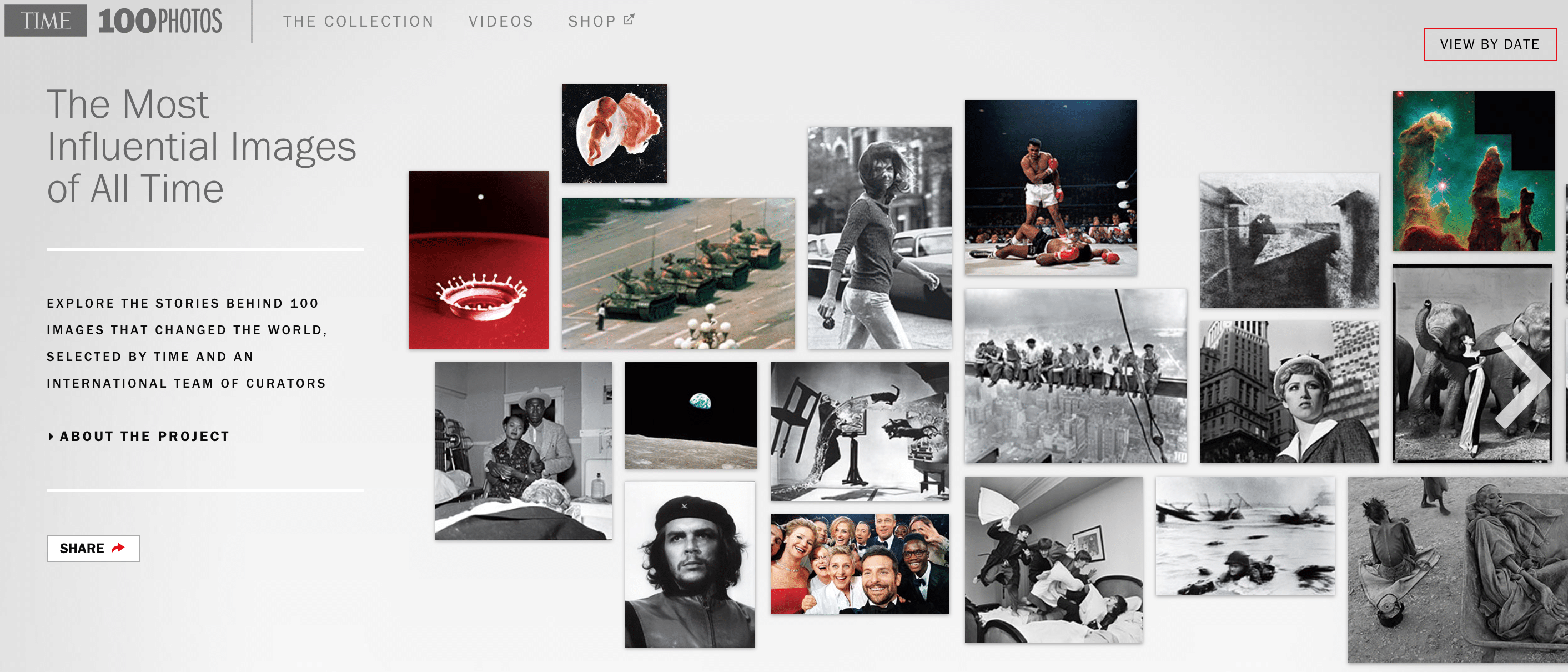
Harrowing and joyful (more of the former than the latter perhaps), TIME’s 100 Most Influential Images of All Time is a hard hitting, emotionally fraught experience, not for the feint hearted.
Perspective enhancing, the images are powerful examples of the best and worst of humanity and a potent reminder that the things we see can, and should, shake us and shape us.
-Tim Cocks

Has man really evolved ? We all have our dark side, our ability to do evil. Lord of the Flies, written by William Golding springs to mind
Hi Tim,
Thanks for posting this, I think it’s really valuable particularly if we can make some sense or it and also learn. Each of those images is an epic story in it’s own right, so to clump 100 of them together is a lot to try and take in!
In answer to David’s question, which was probably rhetorical, human metacognition which facilitates abstract ideas such as morality is thought to have evolved only about 60 000 years ago, therefore violence is likely deeply embedded in our DNA through natural selection over a very, very long period of time (Oro, 2004. Full text link provided).
I finally got time to look properly at all of the images in the ‘Time’ article, and turned the experience into a quasi-experiment/analysis (N=1, self), based on some neurocognitive concepts we have been discussing. The basic idea was rating each image as positive, neutral or negative valence (aka emotion or affect) before and after reading the accompanying text, to ascertain the potential role of executive cognition in valence appraisal.
Overall, similar to Tim and David I found the images were deeply harrowing. Interestingly, before reading the accompanying text, 37 images were rated positive and 36 negative, 27 neutral. These findings are very consistent with humans being considered a visually dominant species with a tendency for negative affect/valence memory consolidation in response to stressful situations. Next I tallied whether the valence appraisal of each image increased, decreased or stayed the same after reading the accompanying text, with a resulting 29 images changing to a more positive valence rating, 7 to a more negative valence and 64 not changing. I would argue that this is consistent with the tenet that executive cognition and education is an important tool in facilitating positive valence appraisal and attenuating stress responses.
A couple of really interesting points from the exercise was the differing nature of neutral valence rating, where some images evoked neither positive nor negative emotion whereas others evoked both strong positive and negative valence, seemingly simultaneously. Also of high interest were the few images which switched entirely from negative to positive (4) or positive to negative (1) rather than through neutral.
Lastly, I know it’s Christmas and this post is predominantly based on science, as it should be, but I will take the opportunity to suggest that we humans would benefit significantly by integrating science and religion better than the current tendency for relatively strict dualism?
Max
Oro JJ. Evolution of the brain: From behavior to consciousness in 3.4 billion years. Neurosurgery. 2004: 54; 1287-1297.
http://neuronrn.com.br/assets/download/brain_evolution.pdf